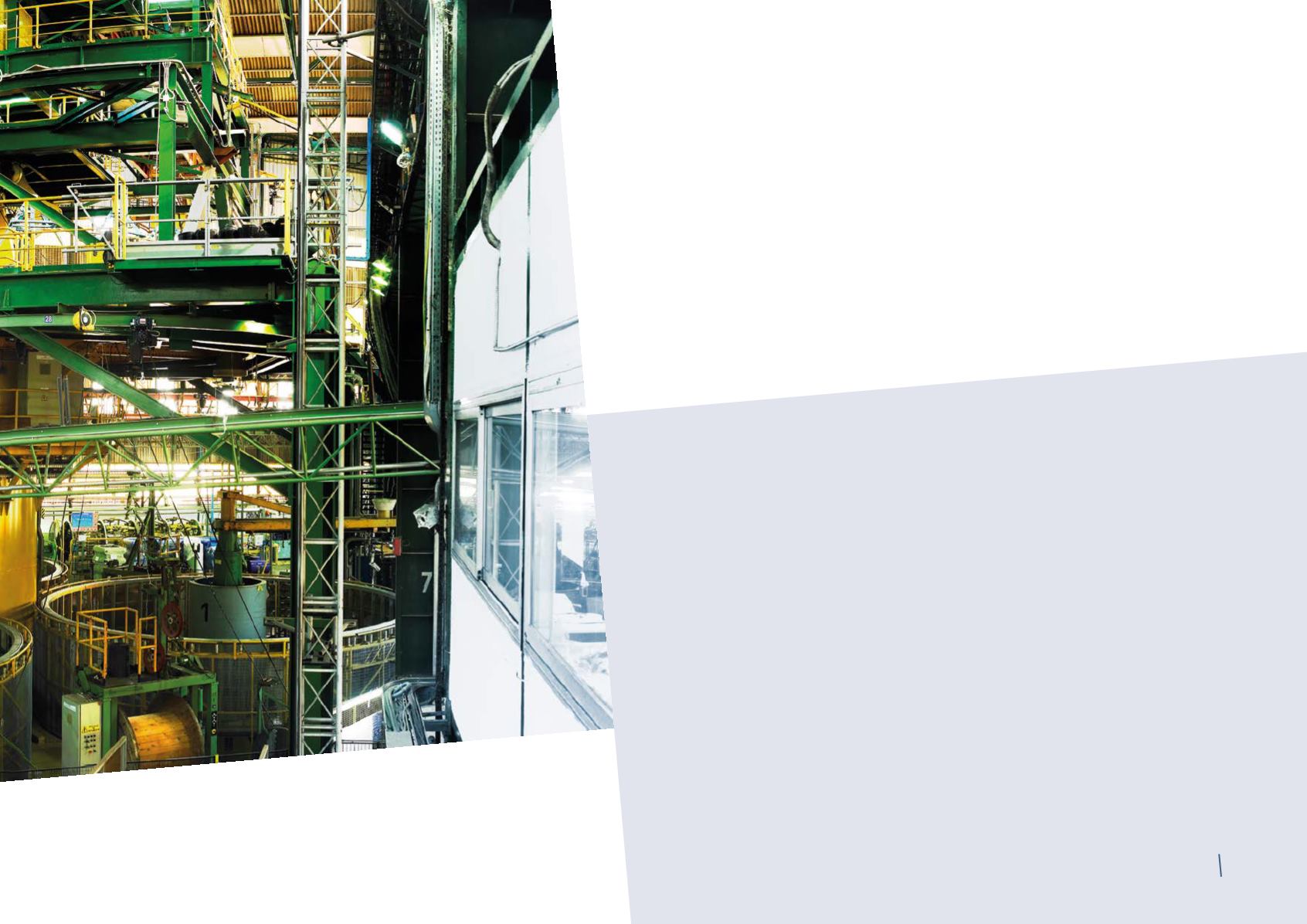

PrysmianGroupbelieves that the commitment
to environmental stewardship and to the
conservation of natural resources is critical for
creating sustainable value.
This approach is expressed in the
products’ intrinsic characteristics and in
the management of production systems.
Prysmian’s Health Safety & Environment
function, together with other functions
and with the backing of the Board of
Prysmian Group has defined and applied
the methodology for assessing the
environmental impact of certain types
of products. In addition, the process of
obtaining certification for the Group’s HSE
management systems continued. At the
end of 2014, 93% and 59% of the sites were
certified in accordance with ISO 14001 and
OHSAS 18001 respectively.
A total of 125 inspections were carried out
at the various manufacturing plants, of
which a quarter by Prysmian auditors aimed
at verifying compliance with the required
standard, while the rest were conducted
by the Group’s main certification body. In
addition to these, there were other internal
audits on specific matters and inspections by
other bodies.
Prysmian completed the environmental and
safety section of the RobecoSAM corporate
sustainability assessment questionnaire for
admission to the Dow Jones Sustainability
Index, with a major improvement on the
prior year score. The HSE function has
already planned and launched several other
initiatives to ensure even more complete
environmental reporting.
Assessing the impact of products
Worldwide
inspections carried out
DJSI admission score improved
Directors, established the objectives that
are communicated to all Country and
Organisational Unit managers. In 2014, HSE
further consolidated its action by centralising
activities and coordinating the work of local
HSE functions. The Management Procedures
and corporate Technical Standards have been
introduced and applied in the operating units.
The HSE function has periodically checked the
effectiveness and correct implementation of
HSE rules locally.
25
Active policy further consolidated
The Group has started to collect energy
consumption data to keep a track of ‘direct’
emissions (from the production process),
and ‘indirect’ ones (from bought-in energy).
The monitoring and reporting system has
allowed Prysmian to participate, once again
in 2014, in the Carbon Disclosure Project, the
international initiative aimed at achieving
the Kyoto Protocol’s targets for worldwide
reduction in greenhouse gases.
Tracking greenhouse emissions

















